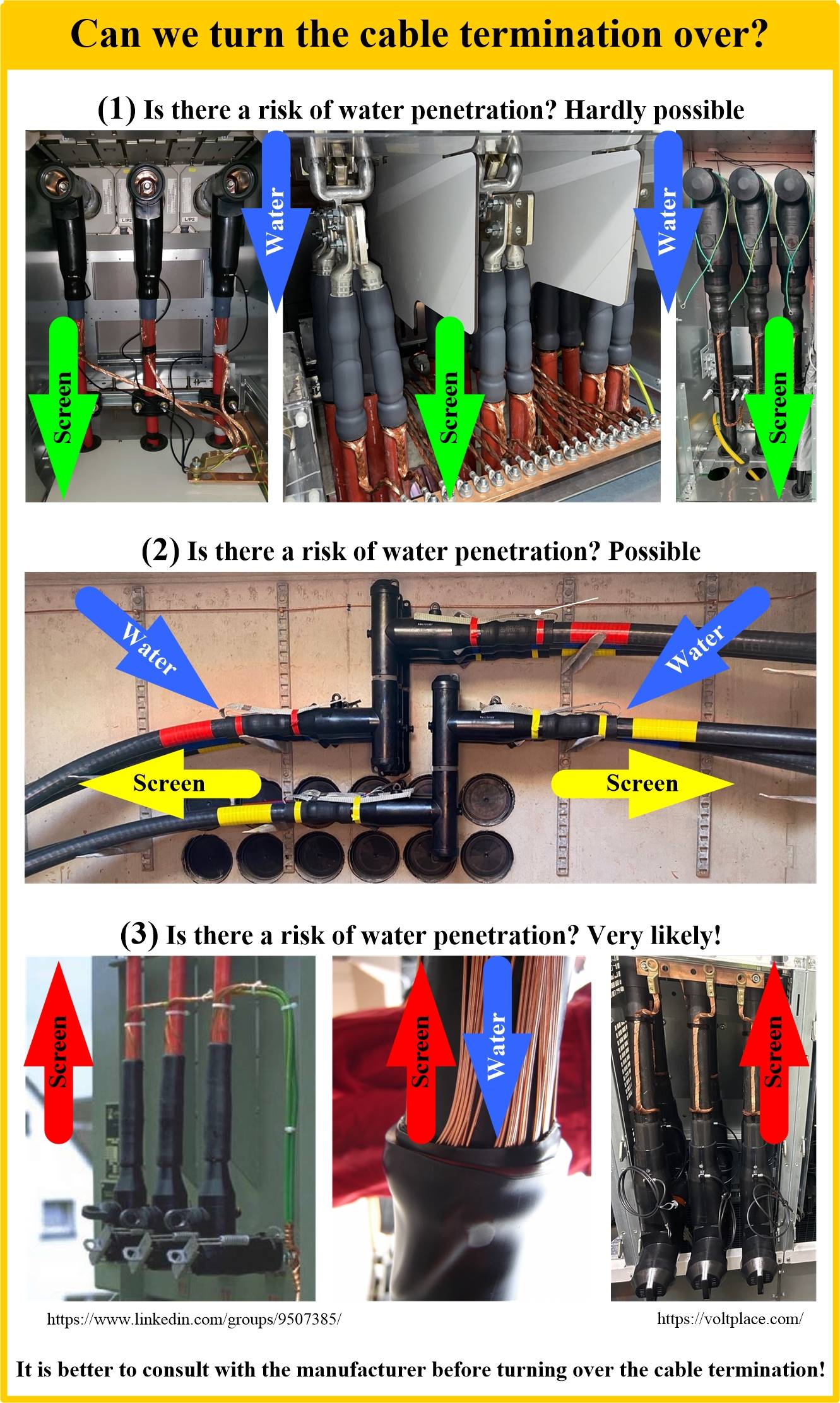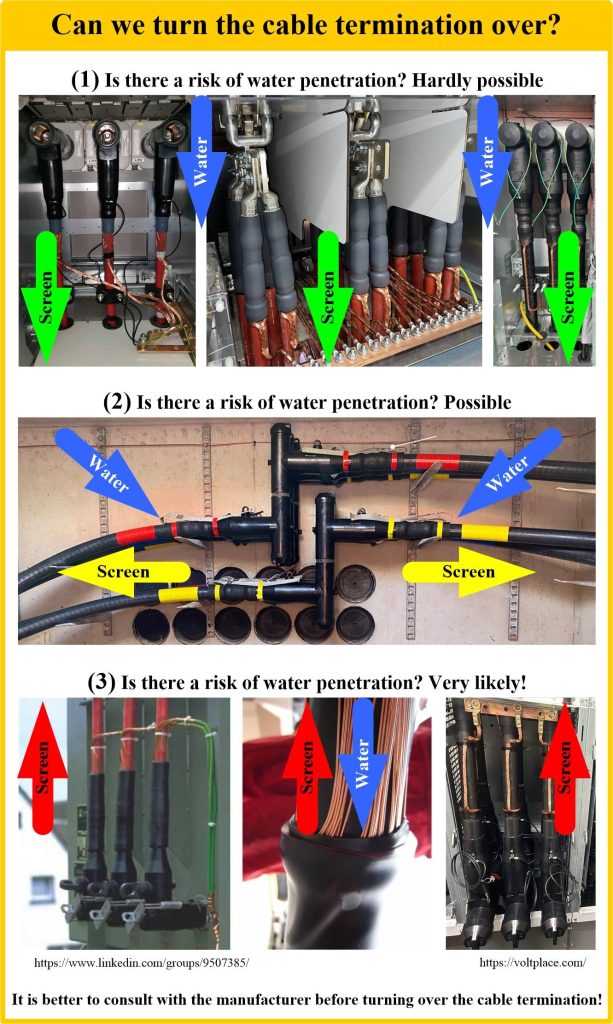
Cable adapter position
We know that one of the advantages of cables with solid insulation (XLPE, EPR, PVC) is that these cables have no restrictions on the height difference of the route. We can lay such cables horizontally, vertically, at an angle. Any cable arrangement is allowed, as long as the cable bending radius is not violated and the cable is fixed properly. But what about the cable couplings?
Unlike cables, there is a number of serious restrictions on the position of the cable terminations and cable joints. Today let’s talk about terminations for cable lines of voltages of up to 36 kV. Such terminations are often designed for internal installation and are adapters (they are shown in the photo).

In practice there are many different adapters and ways to install them. Reasons for diversity:
✅ Many different manufacturers;
✅ Each manufacturer has many modifications of adapters;
✅ There are many really different places where we need to install adapters;
✅ There are many different teams of installers.
However, let us talk about a simple thing – the orientation of the adapter in space. In all this variety, I personally met three options for installing adapters:
1️⃣ The adapter is vertical, and the screen comes down;
2️⃣ The adapter is horizontal, and the screen comes to the left or right;
3️⃣ The adapter is vertical, but inverted, and the screen goes up.
Option (1) accounts for more than 95% of all installations, but options (2) and (3) can also be found. In my opinion, options (2) and (3) should be avoided, since moisture can get into the adapter along the gaps between the screen wires.
I understand that we are talking about the adapters of the internal installation, and it will not rain from above. However, for example, there may be condensate or just high humidity. Is there a risk of water penetration into the adapter? It seems to me that for options (2) and especially for (3) it is quite likely. Therefore, I would advise consulting with the adapter manufacturer if someone requires option (2) or (3).
